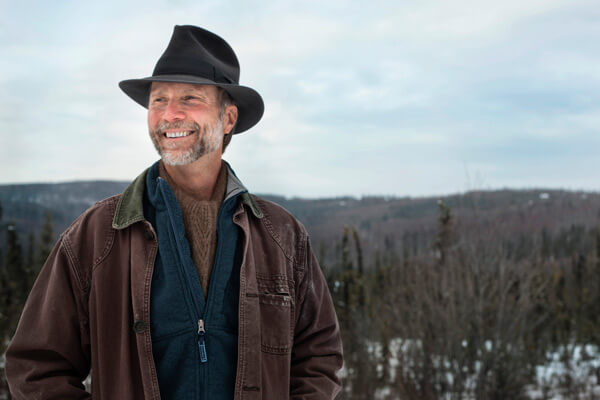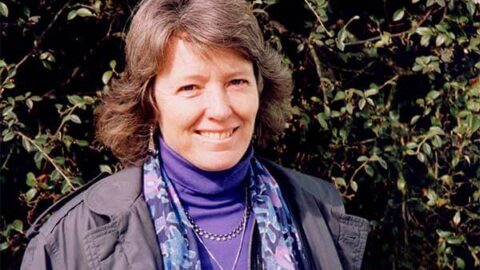 Vancouver New Music Festival celebrated its 2014 edition from October 16 to October 19 with the theme Sonic Topographies, bringing together the works of composers and sound artists alike into a common discourse on the nature of music, sound, and sustainability. True to these topics of interest, the third night of the festival on Saturday, October 18 featured a diverse and inquisitive range of works by Leslie García, John Luther Adams, Hildegard Westerkamp, and Annea Lockwood.
Vancouver New Music Festival celebrated its 2014 edition from October 16 to October 19 with the theme Sonic Topographies, bringing together the works of composers and sound artists alike into a common discourse on the nature of music, sound, and sustainability. True to these topics of interest, the third night of the festival on Saturday, October 18 featured a diverse and inquisitive range of works by Leslie García, John Luther Adams, Hildegard Westerkamp, and Annea Lockwood.

The first performance entitled Bio-Box was an audiovisual experiment by Mexican sound artist Leslie García. Using living systems such as mosses and algae as her musical instruments, García moved these plant pods around along the surface of a light box – all the while introducing physical stimuli such as touch and vibration – to elicit various electrical responses between each plant. The micro-voltage generated from this biofeedback interface was then made audible to listeners, accompanied by a video projection of cells in motion; the resulting effect is like a sonic microscope, a scientific exposition revealing the unheard gurgles and hums of organisms under provocation. García’s performance, conducted as if in a laboratory, was the most technical one of the night. Although hard to grasp at times given the abstract nature of Bio-Box, the microbial drone did provide unexpected surprises in the form of overtones and reckless rhythms, elements which helped to bridge the gap between García’s direct experience as manipulator of these sounds and the more objective experience of the audience.
John Luther Adams’ Four Thousand Holes (2010) followed after a brief intermission. The piece, performed by pianist William Fried and percussionist Scott Deal on bells and vibraphone, was underscored by an electronic soundtrack whose source sounds were derived from the featured instruments themselves. In this way, the two textures of performance – electroacoustic and live – folded into each other beautifully, melding in the same musical space despite the soundtrack being fuller and seemingly more present in the acoustic environment. From the performers’ perspective, Adams’ complex rhythms had to hold its own ground and thus required intense concentration, a challenge which Fried and Deal met with soul and utmost care. Four Thousand Holes somehow managed to sound delicate but not fragile, determined but not forceful, and bright but not blinding; the performance was a truly engrossing one.

Next up was Hildegard Westerkamp’s Fantasie for Horns II (1979) for solo French horn and electroacoustic soundtrack (created from recordings of foghorns, trainhorns, and other horns from the Canadian coasts). In her pre-concert talk, Westerkamp made it known to the audience that the soundtrack was in fact the foundation of her piece (complete in and of itself as Fantasie for Horns I), and that the live instrumentation was composed afterwards as an added sonic dimension. This distinction came through quite clearly in the performance as Nick Anderson – despite maintaining the role of a soloist on stage, backstage, and on the balcony – played entirely in service to the sounds coming out of the speakers, choosing to flatten his tone rather than to round it out. To rid of virtuosity this way is no easy feat for most musicians standing alone on stage, but it was masterfully achieved by Anderson who dared to listen to Westerkamp’s composition and to let the soundtrack take the lead.

The evening ended with Annea Lockwood’s Buoyant (2013) and Dusk (2012), two stereo electroacoustic works which sought to expand the way we hear marine environments. Buoyant, for instance, combined the lapping and plopping of water at close range with the more distant sounds of creaking and clanking gangplanks at a ferry terminal. Dusk, on the other hand, coupled transposed bat calls from up high with the low pulsing frequency of ‘black smoker’ hydrothermal vents along the seafloor. Lockwood’s pieces were direct and deeply visceral in their imaginative use of sound recordings, encouraging listeners to close their eyes and immerse themselves within her soundscapes.
Although this was only one night out of four, Sonic Topographies proved to be a delight for curious ears and minds. Vancouver New Music deserves much credit for bringing acoustic ecology to the forefront of their annual festival, and not just focusing on new music alone. One can only hope that next year’s crowd will be bigger and include more audience members from beyond the academic and sound art spheres.
























